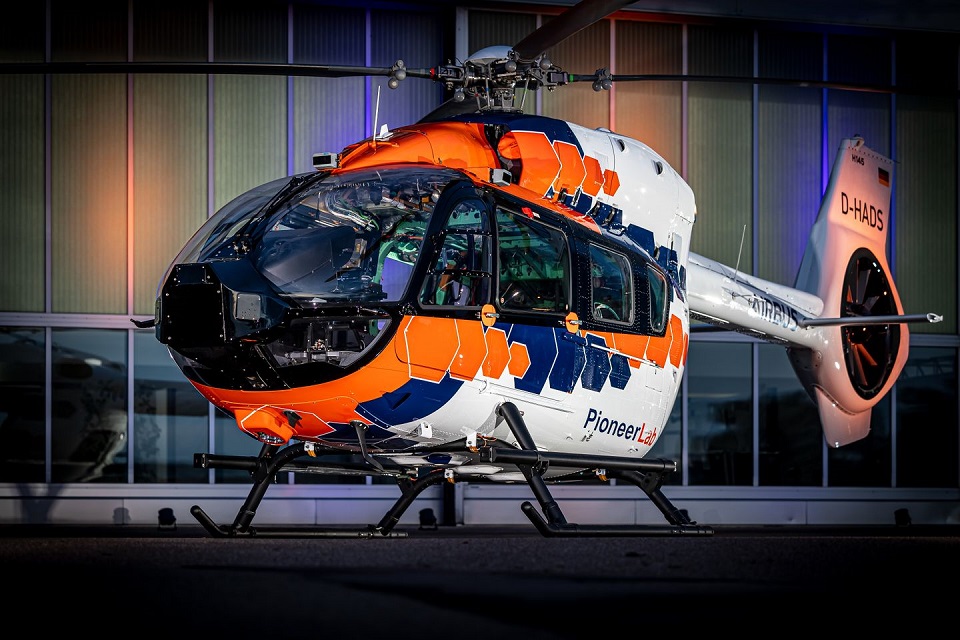Aerospace
Airbus unveils PioneerLab as its new twin-engine flying laboratory

Airbus Helicopters introduced the PioneerLab, a new twin-engine technology demonstrator built on the H145 platform, during the German National Aviation Conference in Hamburg. It completes Airbus’ FlightLabs lineup and focuses on researching and testing innovations in the fields of reducing helicopter emissions, boosting autonomy, and incorporating bio-based materials.
The PioneerLab’s hybrid electric propulsion system and aerodynamic modifications are intended to show a fuel savings of up to 30% when compared to a standard H145. Airbus Helicopters will test structural elements made of bio-based and recycled materials in flight on the demonstrator in an effort to minimise the environmental impact of the full aircraft life cycle.
Emirates expands flight training academy’s aircraft fleet(Opens in a new browser tab)
The business plans to create the new components using procedures that increase recyclability while consuming less energy and material. The latest digital technology will be included into the flight control system and related sensors of the aircraft as part of ongoing research efforts to improve autonomy and safety during crucial flight phases like takeoff and landing.
Through its national research programme LuFo, the BMWK, the Federal Ministry for Economic Affairs and Climate Actions in Germany, co-funds PioneerLab in part. The FlightLabs of Airbus Helicopters offers flexible and effective test platforms for speedy technology evaluation. They fit into the company’s plan to develop technologies for new platforms while also making small improvements to its visible products.
Airbus and KAI to launch Light Armed Helicopter serial production(Opens in a new browser tab)
The manufacturer’s largest German facility in Donauwörth has already started the PioneerLab flight campaign, with the first technological component tested on board the demonstration being a rotor strike alarm system. The system’s automatic take-off and landing will be tested in the following phase.








